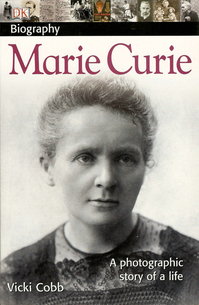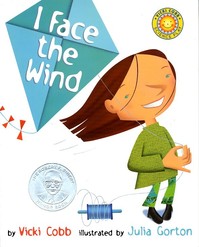The word "author" means "source." Part of the job of an author is to be able to defend one's work. So if someone challenges, "How do you know?" it's the author's responsibility to provide an answer. For writings in history or language arts, for example, often how we know is that we read it somewhere or that it's common knowledge. So authors in scholarly disciplines cite the works of others to lend credence to their own work. Most people are not studious enough to follow a chain of footnotes in a history text back to an eyewitness account, which may not be all that accurate in the first place. And, as a nonfiction author for children, I know that there is nothing like first-hand experience to enliven my texts and add credibility to my voice. But for science, "hands-on" means something more.

"How do you know?" is a question that every scientist can answer by saying, "Don't take my word for it. This is what I did. If you do what I did, then you'll know what I know." In other words, scientists must be able to provide procedures so that others can replicate the behavior that produced their results, or not. When I wrote my Marie Curie biography, I was fascinated to learn how the scientists of that day eagerly performed each other's experiments, gaining new insights into phenomena about the structure of the atom from their varied perspectives, deepening and enriching their knowledge. Science advances because of a community of shared experiences (the ultimate wiki). Everyone who is interested can see for themselves, constantly vetting each other's procedures. Knowledge accumulated this way is not merely a collection of anecdotes or hearsay, but an overwhelming body of evidence.
How we know, in science, is central to what we know. Hands-on experience in observing nature and doing experiments teaches kids how to do science, just as giving kids art supplies lets them do art. (Just teaching science concepts without the hands-on component is like teaching art history.) You cannot truly understand science unless you know how it works. Watch the DVD from the History Channel called "The Link" about finding a 47 million-year-old fossil that may be a transitional species between the primates that became modern lemurs and the primates that became apes and humans. The program recounts the various ways scientists from several disciplines studied the fossil and came to their conclusions about its life and death. It ended with the famed Dr. Leakey saying that he didn't "believe" in evolution because evolution is like gravity. It is an indisputable fact, not something that may or may not exist so that you can choose whether or not to believe in it. When you see the nitty-gritty of how scientists studied this fossil, there is no way to make sense out of it without the fact of evolution.

The biggest problem I have with some hands-on science activities and activity books for kids is that there is little or no connection between an activity and the questions it illuminates and how it relates to a child's life. Sometimes I look at these books and shake my head wondering why a kid would even want to try something in the first place. So many science activity books just gratuitously give directions for things to do without giving the reader any reason to do them. That kind of "hands-on" is only fun if you're making an explosion or a volcano. That's why I write hands-on activities in context. A good example is in "I Face the Wind." Catching air in a plastic bag is a "So what!" unless the reader understands that this is proof that air is "real stuff" even if you can't see it, smell it or taste it. Air is real because you can feel it when it moves and you can push against it when it is trapped in a plastic bag. This most mundane activity takes on import and drama when presented in a context that makes the activity significant. I've watched very young kids "catch air" and get excited about the idea that something invisible, that you can't grab with your hand, is as real as stuff they can see.
So it is my job as an author who writes hands-on activities to create the context through language that makes these experiences meaningful (and memorable) for my readers. It is this integration of story and see-for-yourself activities that has become my voice.



Leave a comment